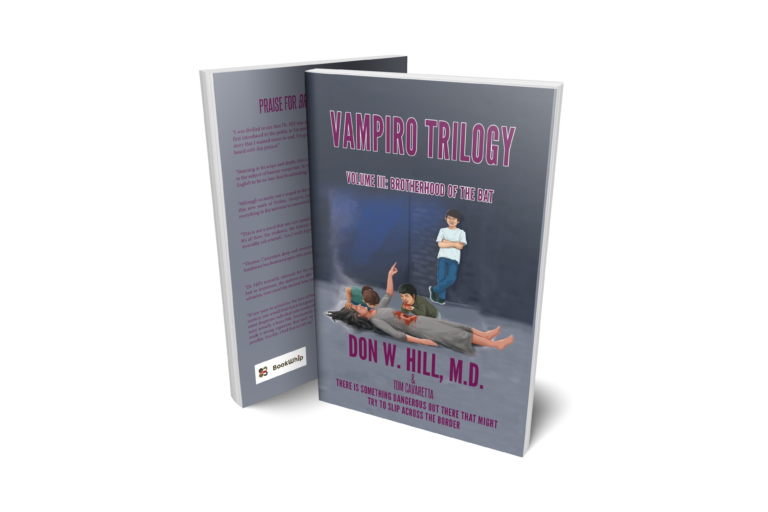

book review by Mihir Shah
“The members of the cartel have renounced God… the local captain of the cartel, El Lobo, worships the
Mayan bat god, Camazotz.”
Set in the Land of Enchantment, the narrative begins with a seemingly uneventful encounter between Dr.
“Birdy” Marshall, an archaeologist, and two physicians, Dr. Parker Coxswain and Dr. J.D. Brewster, colleagues of Birdy’s late
brother. In fact, her brother’s demise leads her to the lab and acts as the catalyst that initiates numerous storylines revolving
around human vampirism and sets off a multitude of undercurrents. At its core, the story is engaging yet wildly imaginative;
through endless doses of creative worldbuilding, Hill and his late co-author Cavaretta delve into an array of unique themes and
continue to push the limit of what’s possible.
With many characters having pivotal roles throughout the novel, the authors effectively tackle the gargantuan challenge of
keeping every plot point and character trajectory connected. On the one hand, there’s the eccentric Dr. Zachary Hawk, who has
invited Birdy to join a dig and test her theory of “human predation human sacrifices” during pre-Columbian times. Birdy’s instant
connection with Parker turns the dig into a three-person adventure, and undoubtedly the trio is destined to uncover the
unexpected. Conversely, the cartels are wreaking havoc, but none more notorious than the Astilladora de Madera, which literally
translates as “woodchipper.” The cartel’s leader, Lobo Grande, is responsible for the devastating imagery of his victims being
sent through the woodchipper. What’s worse is that those who are not slaughtered must accept their induction as slaves of the
cartel by being on the other end of the chipper “shower” and not being allowed to wash off the human remnants for twenty-four
hours.
On a more secretive level, the US Government’s Nightcrawler program, a bioweapon military program that features vampires to
combat the drug trade, is in shambles when one of the vampires dies in the line of duty. Whether it’s Blake Barker being infected
by the vampire virus in search of his kidnapped child, or priests engaging in ungodly activities with unsuspecting boys, audiences
will hardly find a dull moment in this work. As the plot unravels, the work becomes a tapestry of themes woven together: ancient
Mayan and Aztec practices; the actions of the Church; the role of science, especially that of sickle cell disease, in deflecting the
virus; and power and greed.
Inevitably, there are scenes in this book that are downright astounding for their brutality and gore. Nevertheless, from an
authenticity perspective, the authors do complete justice in painting a portrait of ruthless cartels and the gradual buildup and
intersection of all the plotlines. Specifically, Lobo Grande’s bat-worshiping actions are spine-tingling. Conjure the image of a
military hellbent on ensuring that their darkest secrets don’t get out, a cartel paving a sea of red in its path, and a group of
children infected with vampirism that are set out on a doomsday mission. What ensues is utter pandemonium, chaos from every
angle, and a survival of the fittest mindset that leads to an exhilarating denouement that is befitting of the countless complex
characters who have been reeled into an intricate web of secrets and deceit while being forced to stake their lives at every turn.
Above all else, the narrative is pure entertainment, one that throws its characters into chaos and conflict for sport. It is an
enthralling trial by fire that pushes the boundaries of possibility, even in fiction.
RECOMMENDED by the US Review